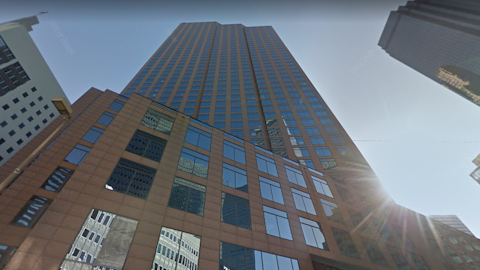In this piece, we will take a look at the 13 best low float stocks to buy. If you want to skip our analysis of the economy and the stock market, head on over to 5 Best Low Float Stocks to Buy.
June 2023 has been an interesting month for the stock market and the economy. The turmoil that both of these have been going through for the past couple of years appears to have entered its final stage. This turbulence has primarily centered around the key metric of inflation, which measures the rate of price increases. Inflation is tied to a handful of factors, with some of these being the amount of money flowing in the market, the demand for workers in the labor market leading to higher pay, the rate at which consumers can borrow capital to make purchases, economic growth, and the propensity of consumers to make purchases.
June has been interesting because it is the first month where multiple data points have converged to enable economists to confidently reach the conclusion that inflation and growth in America are slowing down. The first data point came in the form of the jobs report for May. It presented a mixed picture, sharing that while the number of jobs added in the economy grew to 339,000, the unemployment rate also ticked up by 0.3% to 3.7%. Leaving investors hanging in the balance, the market eagerly awaited for more data to judge the correct state of the labor market. This data point came when the labor department issued the unemployment claims report for the week ending on June 2nd. The report saw the claims jump by 28,000 to sit at 261,000 a high un-reached since the coronavirus pandemic. This data was later revised up to 262,000 from an earlier 261,000 and remained at a similar level for the next week. Then, the new figure of 262,000 (same as the revised data for the previous week) for the week ending on June 10 was again revised to 264,000 – matching the latest data for the week ending on June 17th.
These sets of releases have convinced investors that the Federal Reserve’s attempts to cool down inflation by jacking up interest rates have finally made their mark. The road to this goal has been filled with pain for investors, as high growth technology stocks have tanked not only due to the high interest rates but also due to economic turmoil from the Russian invasion of Ukraine. Yet, as we’ve been insinuating so far, the pain appears to be dulling down. The Labor Department’s latest inflation data is quite optimistic as well. It shows that prices rose by just 0.1% in May 2023 and by 4% annually – at the slowest pace since March 2021.
So what does this entail for the stock market? Well, the NASDAQ Composite is up by more than 8% over the past month, the S&P500 has gained 5.60%, and the New York Stock Exchange (NYSE) is up by 4.27%. Investors, it seems, have penciled in that the Federal Reserve will only raise interest rates by a cumulative 50 basis points during this rate hiking cycle and have priced these expectations accordingly.
Thankfully for us, members of the Federal Reserve are quite forthcoming about their thoughts on what’s next, and on Thursday, the Chairman of the Federal Reserve Mr. Jerome Powell testified before the Senate Banking Committee where he shared:
Nearly all FOMC participants expect that it will be appropriate to raise interest rates somewhat further by the end of the year. But at last week’s meeting, considering how far and how fast we moved, we judged it prudent to hold the target range steady, to allow the Committee to assess additional information and its implications for monetary policy. In determining the extent of additional policy firming that may be appropriate to return inflation to 2% over time, we will take into account the cumulative tightening of monetary policy, the lags with which monetary policy affects economic activity and inflation, and economic and financial developments. We will continue to make our decisions meeting by meeting, based on the totality of incoming data and the implications for the outlook of economic activity, inflation, as well as the balance of risks.
We remain committed to bringing inflation back down to our 2% goal and to keeping longer term inflation expectations well anchored. Reducing inflation is likely to require a period of below trend growth and some softening of labor market conditions. Restoring price stability is essential to set the stage for achieving maximum employment and stable prices over the long run.
With these details in mind, let’s take a look at some great low float stocks that are popular among hedge funds. Low float stocks are defined as those that have fewer percentage of shares outstanding available for trading. This makes their price susceptible to sharp upticks or downticks, which also provide an opportunity for profit. However, investment decisions need to be made prudently, as the chances of price manipulation due to a low floating volume of shares is also high. After researching low float stocks for this piece, we found that some that are popular among hedge funds are White Mountains Insurance Group, Ltd. (NYSE:WTM), Berkshire Hathaway Inc. (NYSE:BRK-A), and NVR, Inc. (NYSE:NVR).

Pixabay/Public Domain
Our Methodology
To compile our list of best low float stocks to buy according to hedge funds, we first narrowed down companies with less than ten million shares that are floating for purchase. Then, the top forty firms based on market capitalization were selected. Following this, the number of hedge funds that had bought these firms’ shares as of Q1 2023 was determined through Insider Monkey’s database of 943 hedge funds, and the final list of the best low float stocks is as follows.
13 Best Low Float Stocks to Buy
13. John B. Sanfilippo & Son, Inc. (NASDAQ:JBSS)
Number of Hedge Fund Investors In Q1 2023: 17
John B. Sanfilippo & Son, Inc. (NASDAQ:JBSS) is a food company headquartered in Elgin, Illinois. It sells a wide variety of products such as peanuts, walnuts, cashews, peanut butter, and chocolate.
Insider Monkey dug through 943 hedge funds for their Q1 2023 shareholdings to find out that 17 had bought a stake in the company. Chuck Royce’s Royce & Associates is John B. Sanfilippo & Son, Inc. (NASDAQ:JBSS)’s largest hedge fund investor with a $45 million stake.
Along with Berkshire Hathaway Inc. (NYSE:BRK-A), White Mountains Insurance Group, Ltd. (NYSE:WTM), and NVR, Inc. (NYSE:NVR), John B. Sanfilippo & Son, Inc. (NASDAQ:JBSS) is a hot low float stock.
12. CorVel Corporation (NASDAQ:CRVL)
Number of Hedge Fund Investors In Q1 2023: 17
CorVel Corporation (NASDAQ:CRVL) is an insurance firm based in Fort Worth, Texas. The company provides health, liability, auto, and other insurance products.
By the end of 2023’s March quarter, 17 of the 943 hedge funds part of Insider Monkey’s database had bought a stake in CorVel Corporation (NASDAQ:CRVL). The firm’s largest investor in our database is Jim Simons’ Renaissance Technologies with a $138 million investment.
11. Texas Pacific Land Corporation (NYSE:TPL)
Number of Hedge Fund Investors In Q1 2023: 17
The Texas Pacific Land Corporation (NYSE:TPL) is a land management firm that deals with oil exploration properties. It also provides water gathering and treatment services. The firm owns rights to land in Texas and is also headquartered in the state.
17 of the 943 hedge funds polled by Insider Monkey for their first quarter of 2023 shareholdings had bought the firm’s shares. Texas Pacific Land Corporation (NYSE:TPL)’s largest shareholder is Murray Stahl’s Horizon Asset Management with a $2.4 billion stake.
10. NewMarket Corporation (NYSE:NEU)
Number of Hedge Fund Investors In Q1 2023: 18
NewMarket Corporation (NYSE:NEU) is a chemicals company headquartered in Richmond, Virginia. The firm was set up in 1887 and it primarily provides automotive and related products such as engine oil and powertrain fluid.
After digging through 943 hedge funds for their Q1 2023 investments, Insider Monkey discovered that 18 had invested in NewMarket Corporation (NYSE:NEU). Jeffrey Bronchick’s Cove Street Capital is the largest shareholder given that it owns 23,451 shares that are worth $8.5 million.
9. The Boston Beer Company, Inc. (NYSE:SAM)
Number of Hedge Fund Investors In Q1 2023: 20
The Boston Beer Company, Inc. (NYSE:SAM) is a beverage firm operating out of Boston, Massachusetts. It primarily makes and sells alcoholic drinks such as beer and hard seltzer.
20 of the 943 hedge funds part of Insider Monkey’s March quarter of 2023 database had bought the firm’s shares. The Boston Beer Company, Inc. (NYSE:SAM)’s largest hedge fund investor in our database is Steve Cohen’s Point72 Asset Management with a $60 million stake.
8. Coca-Cola Consolidated, Inc. (NASDAQ:COKE)
Number of Hedge Fund Investors In Q1 2023: 20
Coca-Cola Consolidated, Inc. (NASDAQ:COKE) is a beverage distributor for the Coca-Cola Company. It distributes a wide variety of the firm’s beverages, such as carbonated drinks and water.
As of March 2023, 20 of the 943 hedge funds surveyed by Insider Monkey had invested in Coca-Cola Consolidated, Inc. (NASDAQ:COKE). Its largest shareholder is billionaire Cliff Asness’ AQR Capital Management with a $54 million investment.
7. Dillard’s, Inc. (NYSE:DDS)
Number of Hedge Fund Investors In Q1 2023: 22
Dillard’s, Inc. (NYSE:DDS) is a department store operator. It has close to three hundred stores across the Southern and Midwestern areas of America. Dillard’s, Inc. (NYSE:DDS) is headquartered in Little Rock, Arkansas.
By the end of 2023’s first quarter, 22 of the 943 hedge funds part of Insider Monkey’s database had held and invested in Dillard’s, Inc. (NYSE:DDS)’s shares. D. E. Shaw’s D E Shaw is the biggest investor as it owns 120,167 shares that are worth $36 million.
6. Cable One, Inc. (NYSE:CABO)
Number of Hedge Fund Investors In Q1 2023: 23
Cable One, Inc. (NYSE:CABO) is a telecommunications company that serves the needs of more than a million customers. The firm provides data, voice, video, and television services.
23 out of the 943 hedge funds polled by Insider Monkey had held Cable One, Inc. (NYSE:CABO)’s shares as of March 2023. Out of these, the firm’s largest shareholder is Tom Russo’s Gardner Russo & Gardner with a $63 million stake.
White Mountains Insurance Group, Ltd. (NYSE:WTM), Cable One, Inc. (NYSE:CABO), Berkshire Hathaway Inc. (NYSE:BRK-A), and NVR, Inc. (NYSE:NVR) are some low float stocks finding favor with hedge funds.
Click to continue reading and see 5 Best Low Float Stocks to Buy.
Suggested Articles:
- 11 Best Asian Stocks to Buy
- 10 Tech Stocks Benefiting From The AI Boom
- 10 Best Hospitality Stocks to Buy
Disclosure: None. 13 Best Low Float Stocks to Buy is originally published on Insider Monkey.



